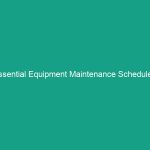Introduction
Health, Safety, and Environment (HSE) practices are crucial in safeguarding workers and ensuring compliance with Regulations across various industries. Particularly, when work is conducted near or in water, the risks increase significantly due to potential Hazards such as drowning, slips, and equipment failure. Implementing safe practices for work near or in water is essential to mitigate these risks and protect employees. Understanding the importance of Workplace Safety not only helps in preventing accidents but also promotes a culture of responsibility and accountability within organizations.
Regulatory Frameworks Governing Water-Related Work
Various regulatory bodies have established guidelines and frameworks to ensure Safety in environments where water is a factor. In many countries, regulations are set forth by organizations such as the Occupational Safety and Health Administration (OSHA) in the United States, and similar bodies elsewhere. These regulations outline the necessary Precautions and Procedures that must be adhered to in order to maintain Safety Standards.
Key Regulations to Consider
- osha Standards: OSHA has specific standards for working over or near water, including the requirement for Fall Protection and the use of Personal Protective Equipment (PPE).
- Environmental Protection Agency (EPA): The EPA’s regulations ensure that any work done in water bodies does not adversely affect the environment.
- Local Regulations: Many localities may have specific regulations governing water-related work that must be adhered to, including permits and safety inspections.
Importance of Compliance
Compliance with these regulations is not just about avoiding fines; it fundamentally protects employees and reduces liability for employers. A strong safety record can enhance a company’s reputation and help in attracting talent while also ensuring that workers return home safely at the end of each day. Understanding and integrating these regulatory requirements into daily operations is a critical step in fostering a safe working environment.
Best Practices for Working Near or In Water
Implementing safe practices for work near or in water requires a multifaceted approach that encompasses Training, proper equipment, and ongoing risk assessments. Here are some Best Practices that should be considered:
Comprehensive Training Programs
One of the most effective ways to ensure safety is through comprehensive training programs. Employees should be trained on the specific Hazards associated with working near or in water, including:
- Identifying potential hazards in the work environment.
- Understanding the importance of personal flotation devices (PFDs) and their correct use.
- Emergency response procedures, including rescue techniques.
- Proper use of equipment and tools in water-related tasks.
Regular refresher courses should also be conducted to ensure that all workers remain aware of the latest safety protocols and techniques.
Utilizing Personal Protective Equipment (PPE)
Proper PPE is essential when working in or near water. Depending on the specific job, this may include:
- Personal flotation devices (PFDs) for workers in or near water.
- Water-resistant clothing and footwear to prevent slips and hypothermia.
- Helmets to protect against falling objects.
- Gloves and goggles for hand and Eye Protection during specific tasks.
Employers should ensure that PPE is readily available, in good condition, and that workers are trained in its proper use and Maintenance.
Conducting Risk Assessments
Regular risk assessments are vital in identifying potential hazards before they result in incidents. This process should involve:
- Evaluating the work environment for potential risks such as strong currents, water depth changes, and weather conditions.
- Assessing the need for safety barriers or signage to alert workers to hazards.
- Reviewing past incidents to identify patterns and areas for improvement.
By proactively addressing risks, organizations can develop strategies to mitigate them, thereby enhancing overall safety.
Case Studies: Learning from Past Incidents
Case studies provide valuable insights into the importance of adhering to Safe Practices for work near or in water. Analyzing past incidents helps organizations to avoid similar mistakes in the future.
Case Study 1: The Importance of PPE
In 2019, a construction worker fell into a river while working on a bridge project. The worker was not wearing a personal flotation device, and although rescue personnel arrived quickly, the individual suffered severe consequences due to the lack of proper Safety Measures. Following this incident, the company implemented mandatory PPE training and a strict policy requiring the use of PFDs at all times when working near water. This case underscores the critical nature of proper equipment and training.
Case Study 2: Risk Assessment Failures
In another incident involving a marina, workers were performing maintenance on a dock without conducting a thorough risk assessment. Strong currents were present that day, leading to one worker being swept away and resulting in a tragic drowning. This incident prompted the marina to revamp their safety protocols, including mandatory risk assessments before any water-related work. The importance of recognizing environmental conditions cannot be overstated.
Challenges in Implementing Safe Practices
Despite the clear Benefits of implementing safe practices for work near or in water, organizations often face challenges. These can include:
Resource Limitations
Many organizations struggle with limited resources, which can hinder their ability to provide adequate training, PPE, and safety equipment. It is essential for businesses to allocate sufficient budgets to Safety Measures to prevent accidents and ensure compliance with regulations.
Employee Compliance
Another challenge is ensuring employee compliance with safety protocols. Workers may become complacent over time, leading to risky behaviors. Continuous training and a culture of safety are critical in overcoming this challenge. Encouraging employees to report unsafe conditions and rewarding adherence to safety policies can foster a safer working environment.
Environmental Factors
Environmental conditions can change rapidly, and these fluctuations can pose significant risks. Weather changes, water levels, and wildlife interactions are all factors that workers must be prepared to deal with. Organizations should develop flexible safety plans that can adapt to changing conditions, ensuring that employees are always equipped to handle unexpected situations.
Future Trends in Water Safety Practices
As industries continue to evolve, so do the practices surrounding work near or in water. Some emerging trends include:
Technology Integration
The integration of technology into safety practices is becoming increasingly prevalent. Tools such as drones for aerial inspections, wearable safety devices that monitor worker vitals, and advanced training simulations are enhancing the ability to maintain safety in water-related work. These technologies can provide real-time data and alerts about hazardous conditions, further protecting workers.
Increased Focus on Mental Health
There is a growing recognition of the importance of mental health in safety practices. Stress and fatigue can significantly affect a worker’s ability to perform tasks safely. Organizations are beginning to implement mental health resources and training, emphasizing the holistic well-being of their employees, which is crucial in high-risk environments.
Sustainability Initiatives
As environmental awareness rises, companies are increasingly focusing on sustainable practices. This includes ensuring that work conducted in or near water does not negatively impact the ecosystem. Adopting eco-friendly materials and methods is becoming a priority, aligning safety with environmental stewardship.
Conclusion
In conclusion, the importance of safe practices for work near or in water cannot be overstated. By adhering to regulatory frameworks, implementing Best Practices, learning from past incidents, and addressing challenges proactively, organizations can create a safer working environment for their employees. As we look to the future, embracing new technologies and focusing on mental health and Sustainability will further enhance safety measures. It is crucial for all stakeholders to prioritize HSE practices, ensuring that everyone returns home safely at the end of the day. Let us work together to avoid risks today and create a culture of safety that extends beyond the workplace.


